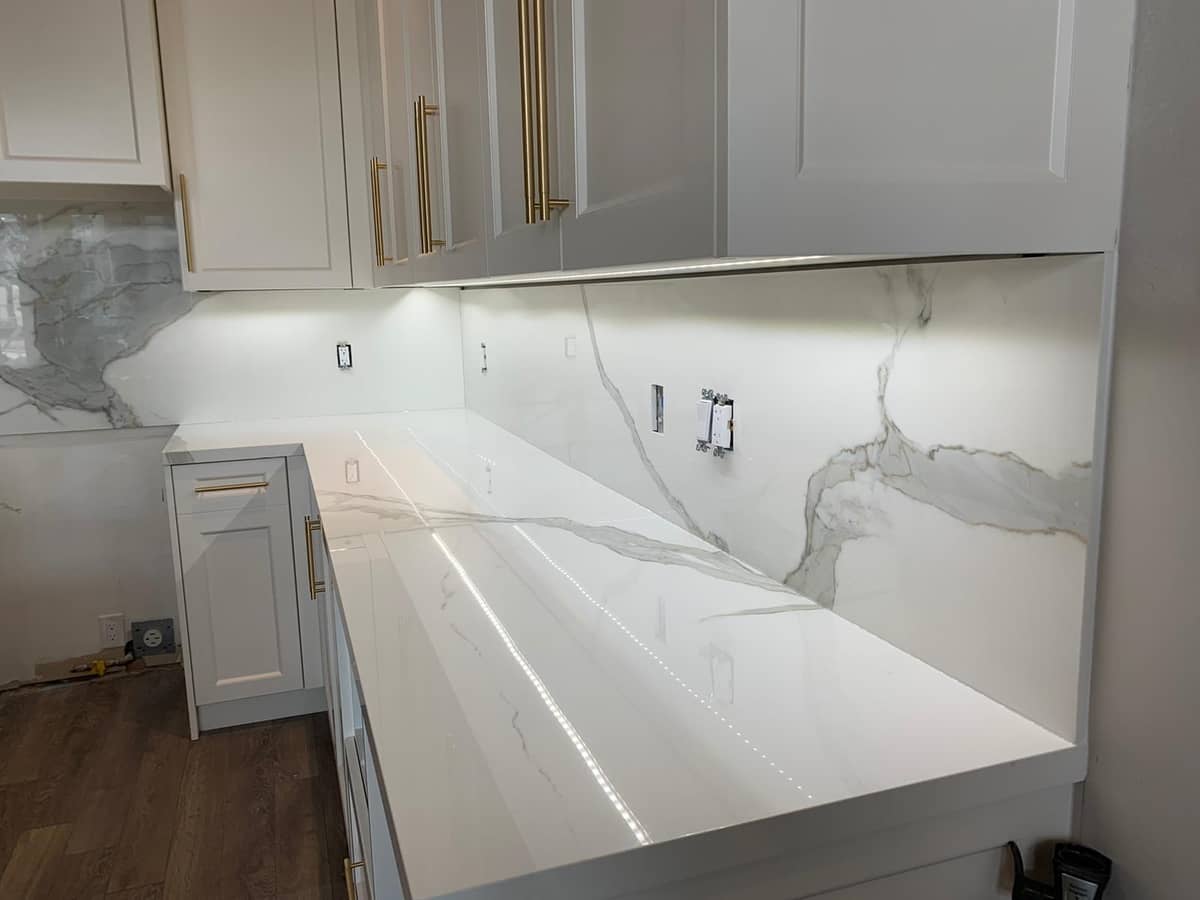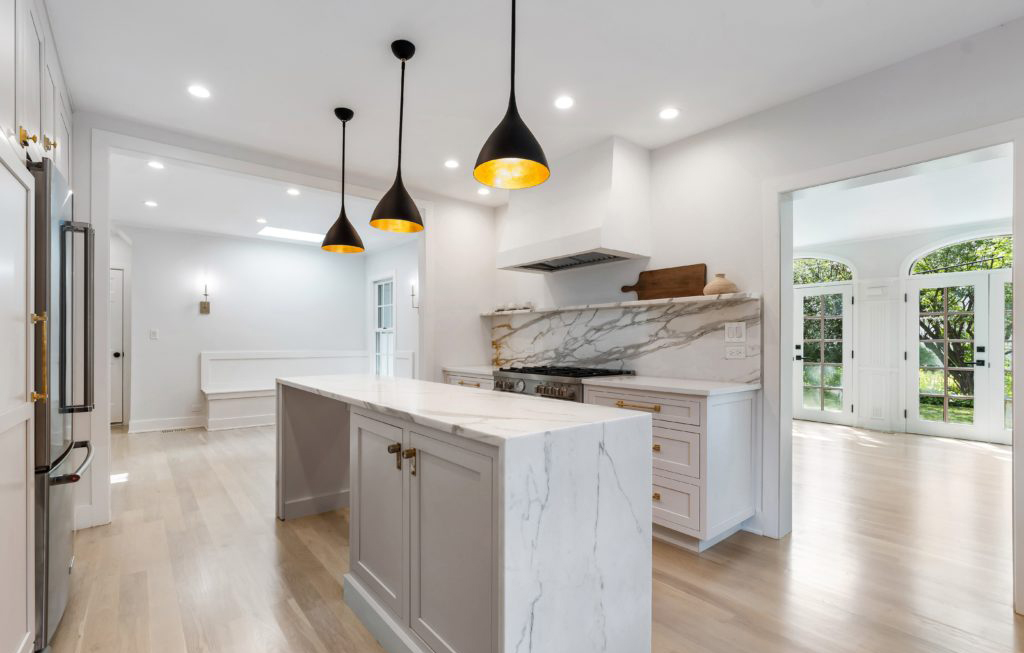The Ultimate Guide to Using Slab Tiles as Kitchen Backsplashes
When it comes to kitchen design, the backsplash is more than just a functional element—it’s a statement piece that can transform the entire aesthetic of your space. Among the myriad of options available, slab tiles have emerged as a top choice for homeowners and designers alike. These large-format tiles, often used as kitchen backsplashes, offer a seamless, modern look that combines durability with elegance. Whether you’re renovating your kitchen or building a new one, slab tiles provide a versatile and stylish solution. In this comprehensive guide, we’ll explore everything you need to know about slab tile backsplashes, from their benefits and design options to installation tips and maintenance. By the end, you’ll be equipped with the knowledge to make an informed decision for your kitchen.

Why Choose Slab Tiles for Your Kitchen Backsplash?
What Are Slab Tiles?
Slab tiles are large-format tiles, typically measuring 12×24 inches or larger, designed to cover expansive surfaces with minimal seams. Unlike traditional smaller tiles, slab tiles create a sleek, continuous look that’s perfect for modern and minimalist kitchen designs. Made from materials like porcelain, ceramic, or natural stone, these tiles are engineered for durability and aesthetic appeal.
Slab tiles are particularly popular for kitchen backsplashes because they reduce grout lines, making the surface easier to clean and maintain. Their large size also allows for bold patterns and textures, making them a focal point in any kitchen.
Benefits of Slab Tile Backsplashes
Seamless Aesthetic: The large size of slab tiles minimizes grout lines, creating a clean and cohesive look. This is especially appealing in contemporary kitchens where simplicity and elegance are key.
Durability: Slab tiles, especially those made from porcelain or natural stone, are highly resistant to heat, moisture, and stains—perfect for the demanding environment of a kitchen.
Versatility in Design: From marble-effect porcelain to bold geometric patterns, slab tiles come in a variety of finishes, colors, and textures to suit any style.
Easy Maintenance: With fewer grout lines, slab tile backsplashes are easier to clean and less prone to mold or mildew buildup.
Increased Property Value: A stylish, high-quality backsplash can enhance the overall value of your home, making slab tiles a smart investment
By choosing a slab tile backsplash, you’re not only following kitchen backsplash trends but also investing in a timeless design that will remain relevant for years.
Choosing the Right Slab Tile for Your Kitchen
Material Options for Slab Tile Backsplashes
When selecting slab tiles for your kitchen backsplash, the material is one of the most critical decisions. Each material offers unique characteristics, so let’s break down the most popular options:
Porcelain Slab Tiles Porcelain is a top choice for backsplashes due to its durability and low maintenance. It’s non-porous, meaning it resists water and stains, making it ideal for kitchens. Porcelain slab tiles are available in a range of finishes, including marble-look, concrete-effect, and wood-grain designs.
Ceramic Slab Tiles Ceramic tiles are more affordable than porcelain but still offer excellent durability. They’re easy to cut and install, making them a favorite for DIY enthusiasts. However, ceramic is slightly more porous, so proper sealing is essential.
Natural Stone Slab Tiles Materials like marble, granite, or quartzite bring a luxurious, organic feel to your kitchen. Natural stone slab tiles are unique, with natural veining and patterns that add character. However, they require regular sealing to prevent staining.
Glass Slab Tiles Glass tiles reflect light, making your kitchen feel brighter and more spacious. They’re easy to clean and come in a variety of colors, though they can be more expensive than ceramic or porcelain.
When choosing a material, consider your budget, maintenance preferences, and the overall aesthetic of your kitchen. For a modern, low-maintenance option, porcelain slab tiles are often the best choice.
Design Trends for Slab Tile Backsplashes
Slab tiles are incredibly versatile, allowing you to experiment with various design trends. Here are some popular styles for 2025:
Marble-Look Slabs: Mimicking the elegance of natural marble, these porcelain tiles offer a high-end look without the high maintenance.
Bold Geometric Patterns: Large-format tiles with intricate geometric designs add a modern, artistic touch to your kitchen.
Textured Finishes: Textured slab tiles, such as those with a 3D effect or matte finish, create visual interest and depth.
Neutral Tones: Soft grays, whites, and beiges remain timeless choices for a clean, sophisticated look.
Metallic Accents: Slab tiles with metallic or glossy finishes are gaining popularity for adding a touch of glamour.
By aligning your slab tile choice with modern kitchen backsplash trends, you can create a space that’s both stylish and functional.
Planning Your Slab Tile Backsplash Installation
Measuring and Calculating Tile Needs
Before purchasing slab tiles, accurate measurements are crucial to avoid waste or shortages. Follow these steps:
Measure the Area: Measure the height and width of the backsplash area in inches. Multiply these numbers to get the total square footage.
Add a Buffer: Add 10-15% extra to account for cuts, breakage, or future repairs.
Consider Layout: Decide whether you want a straight, staggered, or diagonal layout, as this affects the number of tiles needed.
For a seamless installation, consult with a professional or use online calculators to ensure accuracy.
Tools and Materials Needed
To install a slab tile backsplash, you’ll need:
Slab tiles
Tile adhesive or thin-set mortar
Grout
Tile spacers
Tile cutter or wet saw
Notched trowel
Grout float
Level and measuring tape
Sponge and bucket for cleanup
Step-by-Step Installation Guide
Prepare the Surface: Ensure the wall is clean, dry, and smooth. Remove any old backsplash material and patch holes.
Plan the Layout: Dry-fit the tiles to determine the best arrangement, starting from the center to avoid awkward cuts at the edges.
Apply Adhesive: Spread tile adhesive or thin-set mortar using a notched trowel.
Place the Tiles: Press the slab tiles into the adhesive, using spacers to maintain even gaps. Check for level as you go.
Cut Tiles as Needed: Use a tile cutter or wet saw for precise cuts around outlets or corners.
Apply Grout: Once the adhesive has set (usually 24 hours), apply grout with a float, wiping away excess with a damp sponge.
Seal the Grout: For natural stone or ceramic tiles, apply a grout sealer to protect against moisture and stains.
For those tackling a DIY kitchen backsplash project, slab tiles are easier to install than smaller tiles due to fewer cuts and grout lines.
Maintenance and Care for Slab Tile Backsplashes
Daily Cleaning Tips
To keep your slab tile backsplash looking pristine:
Wipe Regularly: Use a damp cloth or sponge with mild dish soap to clean grease or food splatter.
Avoid Harsh Chemicals: Acidic cleaners can damage natural stone or grout, so stick to pH-neutral solutions.
Dry Thoroughly: Prevent water spots by drying the surface with a microfiber cloth.
Long-Term Maintenance
Re-Seal Natural Stone: If you’ve chosen natural stone slab tiles, re-seal every 6-12 months to maintain their stain resistance.
Inspect Grout: Check grout lines periodically for cracks or discoloration and re-grout as needed.
Address Stains Promptly: For stubborn stains, use a baking soda paste or a specialized tile cleaner.
Proper backsplash maintenance ensures your slab tiles remain beautiful and functional for years.
Cost Considerations for Slab Tile Backsplashes
The cost of a slab tile backsplash varies depending on the material, size, and installation method. Here’s a breakdown:
Porcelain/Ceramic: $5-$15 per square foot
Natural Stone: $15-$50 per square foot
Glass: $20-$60 per square foot
Installation: $10-$20 per square foot for professional installation
For a 20-square-foot backsplash, expect to spend $200-$1,500, including materials and labor. DIY installation can save on labor costs but requires time and skill.
When budgeting for your kitchen renovation costs, factor in the long-term value that a high-quality slab tile backsplash adds to your home.
Common Mistakes to Avoid

Skipping Surface Prep: Failing to clean or level the wall can lead to uneven tiles or poor adhesion.
Choosing the Wrong Material: Ensure the tile material suits your kitchen’s needs (e.g., avoid porous materials in high-moisture areas).
Ignoring Grout Color: The grout color can dramatically affect the overall look, so choose one that complements your tiles.
Poor Measurements: Inaccurate measurements can result in wasted materials or an incomplete project.
A slab tile backsplash is a game-changer for any kitchen, offering a perfect blend of style, durability, and functionality. Whether you opt for the timeless elegance of marble-look porcelain or the bold statement of geometric patterns, slab tiles can elevate your kitchen’s design while standing up to daily wear and tear. By carefully selecting materials, planning your installation, and following proper maintenance practices, you can enjoy a stunning backsplash that enhances your home’s value and aesthetic for years to come.
Ready to transform your kitchen? Start exploring slab tile backsplash options today and create a space that’s both beautiful and practical. For more inspiration, check out local tile suppliers or consult with a professional designer to bring your vision to life.
قیمت های موجود در سایت تاریخ بروزرسانی آن ها ذکر شده و قیمت نهایی محصولات نمی باشند. لطفا جهت ثبت سفارش و استعلام قیمت بروز با کارشناسان ما در ارتباط باشید.
(035-3357)